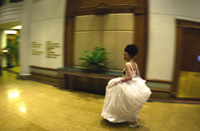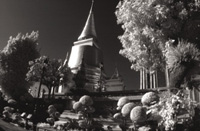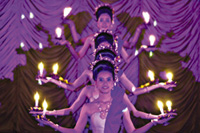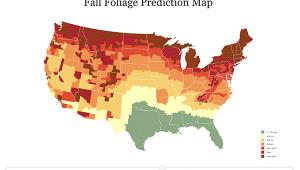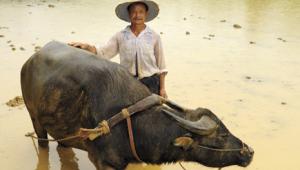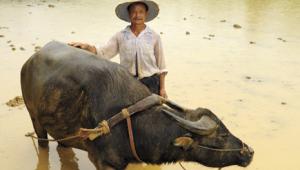In Search Of Asia
Travels With A D1
As a film-based Nikon photographer for 40 years, I made my first foray into digital with the purchase of a Nikon D1 before leaving for a month in southeast Asia. I was determined to satisfy my urge to use digital exclusively on this trip in a totally professional way and to leave my film cameras behind. So the D1 became my constant companion, and the instruction manual was always at hand. Leaving behind the usual overload of film was an immediate advantage. I left for Asia with only the D1, four flash cards of 80MB each, one card of 128MB, two batteries, a Sigma squared-off fisheye 15mm f/2.8, and a Tamron 28-300mm zoom. At the last minute I threw in Nikon 28mm and 85mm lenses. But I didn't need them. The superwide, along with the telephoto was all I needed to cover most situations. In addition, I took a laptop and ZIP drive. The trip had been planned and scheduled by my wife and took us by ship from Beijing to South Korea, Nagasaki, Shanghai, Hong Kong, Vietnam, Singapore, and Thailand. The ship served as our moving hotel, taking us during the night from port to port. Each night, in the convenience of our cabin, I took the images off the flash cards and, using a Qimage Pro by Digital Domain, I was able to add additional information (location/date) to the file storing it all on ZIP disk, and reformatting the flash cards for the next day's shooting. |
|||||
Light Quality Control A big advantage of the D1 was the ability to switch from daylight to florescent to incandescent using the White Balance modes to move to the proper lighting situation. The florescent in foreign countries doesn't register the same as florescent in the US but the preset White Balance put me right in the ballpark. Each day in port, we were off the ship early and on a bus, taxi, or streetcar into town. Along the way, using the wide angle, which does not have autofocus, I could hang the camera out the bus window at arm's length almost in the face of bicyclists and motorcyclists, getting an unusual point of view. The fact that the camera can shoot up to 1/1600 sec meant that the action could be frozen. I even shot through tinted bus windows and through store windows to photograph the scene inside. |
|||||
Night & Infrared I couldn't resist using the camera's infrared capabilities, especially in the Grand Palace in Bangkok. The switch from color to infrared is accomplished with a flick to black and white and the addition of an 87 Wratten filter. All the images were taken at ISO 400 in the Fine mode. The Digital Advantage Once home, a review of the shoot showed some that could use a little fine-tuning from Photoshop. But I've made a smooth transition to digital with the D1. So have my editors, who are now accepting my digital for cover material. Larry Mulvehill and his wife, Carol, a writer, live in Sarasota Florida and travel extensively. Other examples of his work as a professional photographer over the past 40 years can be seen on his web site: www.larrymulvehill.com. e-mail: fogfilter@aol.com. |
- Log in or register to post comments



